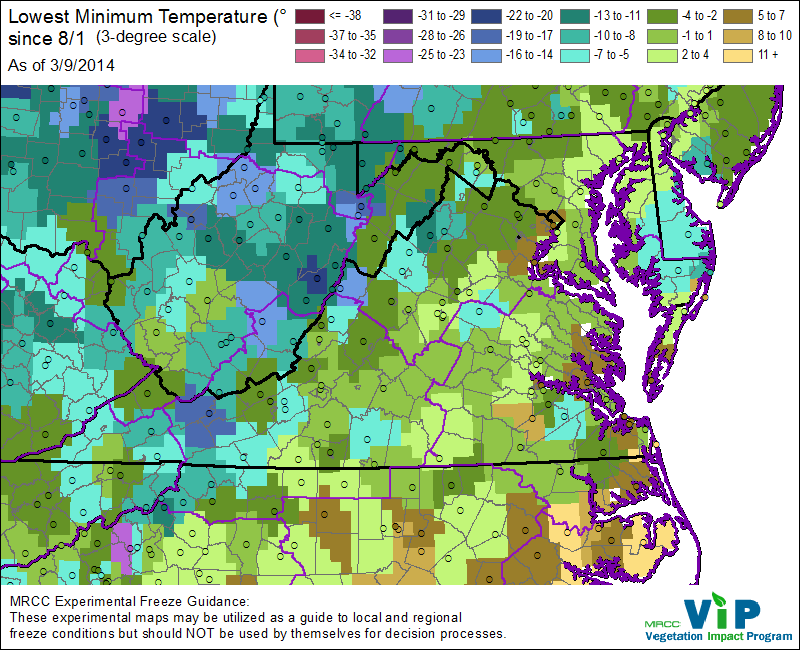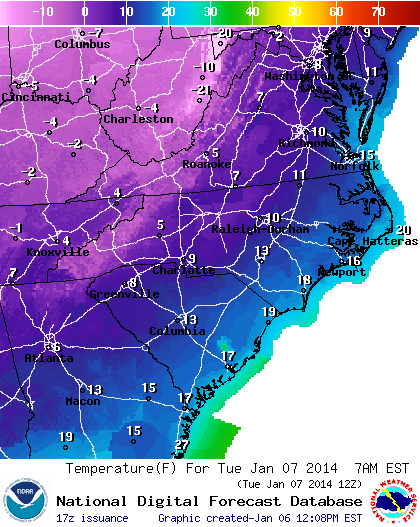Another frost/freeze event is expected from midnight today to 9:00 am tomorrow (Monday, April 18), with temp as low as 30 oF in some portions of central, northern, and northwest Virginia. On their webpage, the National Weather Service stated that “this frost and freeze conditions will kill crops, other sensitive vegetation and possibly damage unprotected outdoor plumbing”. I can’t comment about plumbing, but I can probably provide insights into how this frost event would impact apples, peaches, and apples in the state. In our location in Winchester, VA, most apple cultivars, including Honeycrisp, Gala, Fuji, Reds, and Goldens, are between 20%- 90% bloom. Some early cultivars, e.g., Pink Lady and Zestar, are already post-bloom. For cultivars at early bloom and full bloom, 10% kill happens at temperatures below 28 oF for > 30 min; and 90% kill happens if the temp drops below 25 oF for >30 min. Based on the current forecast, the lowest temp in most of the locations I looked at in Frederick, Rappahannock/Maddison, Roanoke, Nelson, and Carroll counties, is 30 oF, which should not, theoretically, cause any significant damage to apple blossoms. For cultivars at post-bloom and petal fall, subfreezing temp (below 32 oF) can cause damage to the skin of developing fruitlets, leading to “frost rings”. Fruits with a frost ring will likely grow normally until harvest, but blossoms damaged by the frost will likely abscise within the next 2-4 weeks. Temperatures above 28 oF should not cause significant damage to flowers and developing fruits of peaches and sweet cherries.








